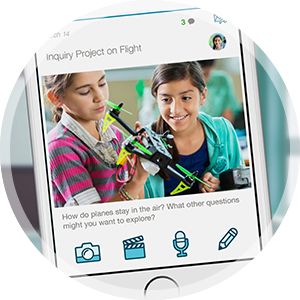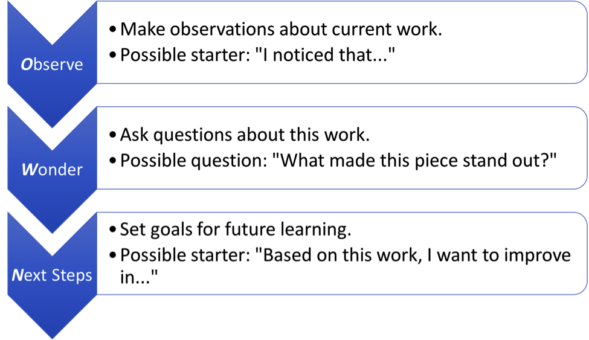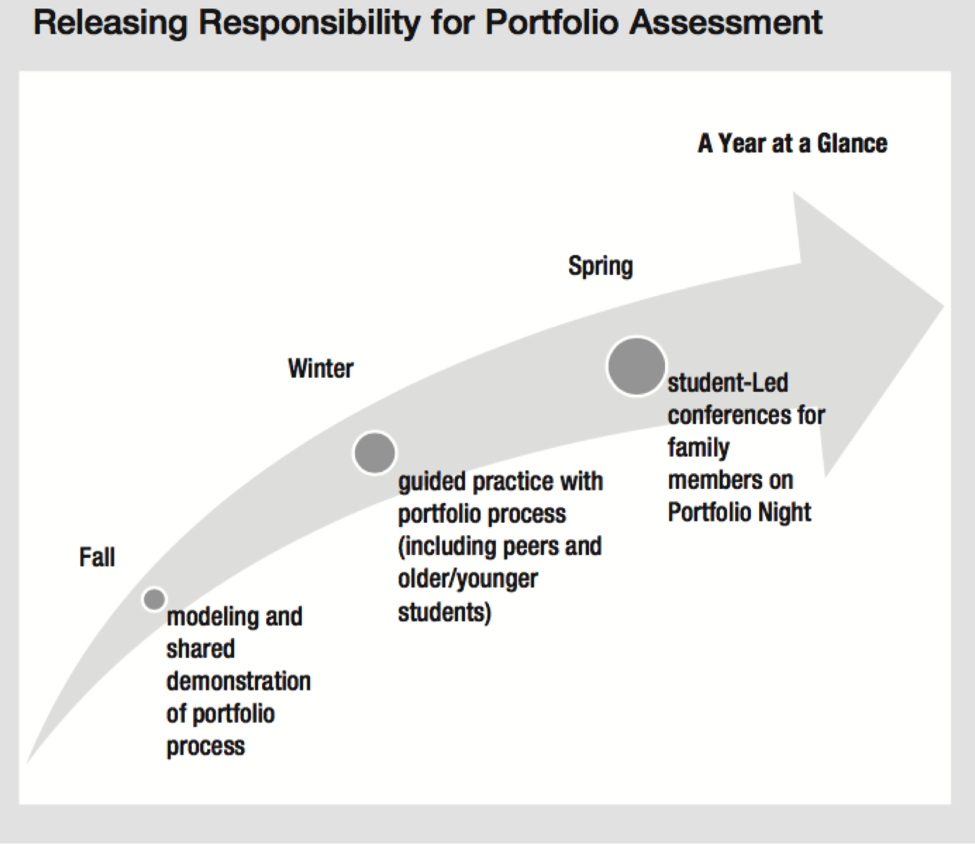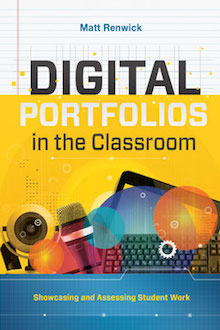Digital Student Portfolios Show What Kids Can Do
When our students leave our schools, what can they point to and say, “I did that”?
The typical artifacts of education they might choose include sports trophies, a diploma, and the cap and gown. But what does any of this tell us about their educational experience? Very little, especially about the main reason for school: learning.
It doesn’t have to be this way. With today’s technologies, any student can now be a curator of their own learning experience. The mini-computers they have in their back pockets can be used to document evidence of their work. Audio, video, images and text can all describe a student’s success and growth over time in a way that grades and scores cannot.
Enter digital student portfolios. These online collections of educational artifacts can become the main method for students to document their own learning. What they capture in the classroom can be a better representation of what our students know and are able to do.
For example, knowing a student’s current reading level pales in comparison to hearing them read a text and then reading their reflection on how they feel they performed in this assessment. Placing recordings one after another chronologically, both the teacher and the parent can truly understand how the child has progressed as a reader and a learner.
So what happens when students start to own their learning and teachers realize that traditional methods of assessment are no longer cutting it? In my experience in schools, I’ve observed two phenomena begin to emerge: student-driven learning experiences, sometimes called “Genius Hour,” and gradeless classrooms. Here are two examples of these classroom evolutions, supported by digital portfolios.
Genius Hour Connections
This concept involves devoting part of the school day to allow students to explore topics they want to learn more about. Denise Krebs and Gallit Zvi, authors of The Genius Hour Guidebook, have found many benefits to carving out a little bit of time for students to pursue their passions.
- They have autonomy and purpose.
- They are given time to master content.
- They stop playing the game of getting good grades.
- They explore and wonder to discover their passions.
- They have the chance to be learning leaders as they share their projects.
In a sea of standards, this can be hard shift for teachers. But what educators need to understand is with Genius Hour, students are hitting the standards. It’s just on their terms instead of terms defined by teachers and schools.
In one example, a teacher put Genius Hour at the end of the school day (she taught a self-contained classroom). Her goal was to have her students more motivated to accomplish their traditional school tasks so they could get to their personal passion projects. For the last half hour of the day, students were tinkering and making different projects of their choosing. They connected their work with the ISTE Standards for Students, such as “Empowered Learner” and “Innovative Designer.”

The real audience made possible by this technology increased the purpose and motivation for students and their projects. A specific result: One student who struggled with behaviors in the beginning of the school year saw a decrease in classroom discipline referrals by 70% from fall to spring. When the teacher asked him why he thought he was more successful, he replied, “I want to tinker at the end of the day.”
Toward Gradeless Classrooms
Another teacher in our school, who had also started using digital portfolios in her classroom during her literacy block, asked me one day, “So if parents already know how their kids are doing, why am I still posting grades?” I stumbled for an answer and soon realized there was no easy response.
Dropping grades from our classrooms can be tempting, but teachers should give it some forethought before acting. Will parents still know how their child is doing in school on a consistent basis? How will teachers ensure their assessment system is valid and reliable, so that what is measured is what is learned?
I advocate for thinking protocols within digital portfolios as an acceptable (and better) method for assessing student learning. One we developed at my prior school is called “O.W.N.” It is an acronym for the three steps a teacher or students can take to reflect, self-assess, and set a goal based on their current work and understanding.

Every six weeks or so, students can be expected to upload an artifact of their learning they feel best represents their knowledge and/or skills within a given discipline. Next, either the teacher can facilitate a conference with the students, or the students can be taught to conduct peer conferences. They use the protocol to observe what was published, wonder why it was worth sharing, and determine next steps in their learning journey.
Students can audio record this process, video record it, or write it out. The reflection and the digital representation of the work can be combined into one within the portfolio application. What’s important is that students are becoming reflective in their work and start to see learning as a continuous process and not an event.
In the spring, students can lead their own portfolio showcase for their families at a regularly scheduled evening event. By using digital portfolios throughout the school year, with modeling and guidance of the teacher, parents are in the loop regarding their child’s progress.

With what’s possible regarding technology in schools today, I see no reason to tread slowly into integrating modern assessment strategies into classrooms. And teachers don’t have to do all the work. Digital portfolios is one way to position students as the lead assessors in their own learning journey. They will be able to look back on their educational experience with a sense of pride that relates to main purpose of school.
Student Digital Portfolio Resources
► “10 Reasons Why You Should Implement Digital Students Portfolios,” by Matt Renwick. ASCD Inservice Blog (October 16, 2017)

►Digital Portfolios Webinar – A free one-hour ASCD webinar with Matt Renwick (archived).
►Principal Center Radio – Matt Renwick and host Justin Baeder discuss the power of student-driven portfolio creation and assessment in this 17-minute interview.
Matt Renwick, a veteran teacher and school leader, is currently principal at Mineral Point Elementary in Mineral Point, Wisconsin. He’s the author of several books, including Digital Portfolios in the Classroom: Showcasing and Assessing Student Work (ASCD, 2017) and 5 Myths About Classroom Technology (ASCD Arias, 2015).
































Need to note that under my bed are two large portfolios of collected student work that my children can point to and say “I did that”….They are many years old ( the portfolios!!) Some of the artifacts are 30 years old! One day I will throw them out (kids don’t want them…) But I can’t bring myself to do that….now if only there were a delete button…
Claudie, don’t throw them out! I’m sure your grandkids will enjoy them some day. You make a good point, too, that not everything needs to be digital. A blend is often the best approach.
-Matt
I can see digital portfolios being indispensable at schools with personalized learning programs, like Vista High School in San Diego. They’re a great way to get to know the interests and talents of students, especially in grades 6-12, when students will have several teachers.
I would agree, Bryan. Epiphany Learning and Project Foundry are two digital portfolio tools developed with personalized learning in mind.